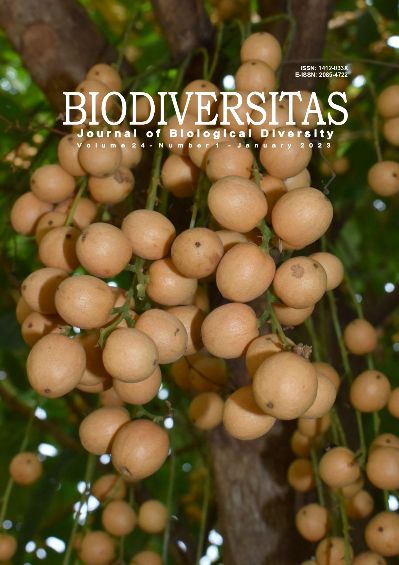The variability influence of physicochemical parameters on macroinvertebrate assemblages in the Rhumel and Endja rivers, Algeria
##plugins.themes.bootstrap3.article.main##
Abstract
Abstract. Kherief-Nacereddine S, Djeddi H, Nail-Yasmine B, Boukeria S, Benmakhlouf Z, Mehennaoui-Afri FZ. 2023. The variability influence of physicochemical parameters on macroinvertebrate assemblages in the Rhumel and Endja rivers, Algeria. Biodiversitas 24: 539-550. Water resources are the most essential resource in the development of the various sectors of a country's economy. In Algeria, a country with a semi-arid climate, the supply of drinking and industrial water is mainly provided by surface water. Currently, the water supply for industrial uses is threatened by the problems of anthropogenic pollution (e.g., urban discharges, industrial and agricultural activities, etc.). The objective of this work is to assess the variability influence of water physicochemical parameters on macroinvertebrate communities in the Rhumel and Endja rivers in Algeria which supply the Beni Haroun. In each river, two observation stations were established located upstream and downstream, totaling four stations (Rhumel: (Rh1 and Rh2) and Endja: En 1 and En 2). Physicochemical parameters of water were measured, and biological parameters of benthic macroinvertebrate assemblages were calculated. The physicochemical approach put highlights the monthly changes in water quality along the two rivers in relation to urban, agricultural, and industrial discharges and as a response to seasonal variations in water level. The difference in taxonomic richness corresponded to environmental conditions of stations appearing more or less stable and highlighting a gradient of the stress on organisms. The results showed that there were 2071 individuals of macroinvertebrates recorded, belonging to 19 families and 10 orders. The individual number of this macrofauna consisted of 75.20% insects, 12.50% worms, and 12.30% mollusks, with the most abundant families across all stations being Chironomidae and Baetidae. The spatiotemporal variability of benthic macroinvertebrate assemblages in the two rivers indicated that summer recorded the highest abundance of all samples. The highest number of macroinvertebrate individuals was recorded at Rhumel stations. The elements indicating high pollution were SO4, PO4- and NO2- with the highest values recorded during the summer season for the four stations. Higher pollution was observed at the Endja river. The findings of this study imply that the waters of two rivers are unsuitable for use even for irrigation purposes.

